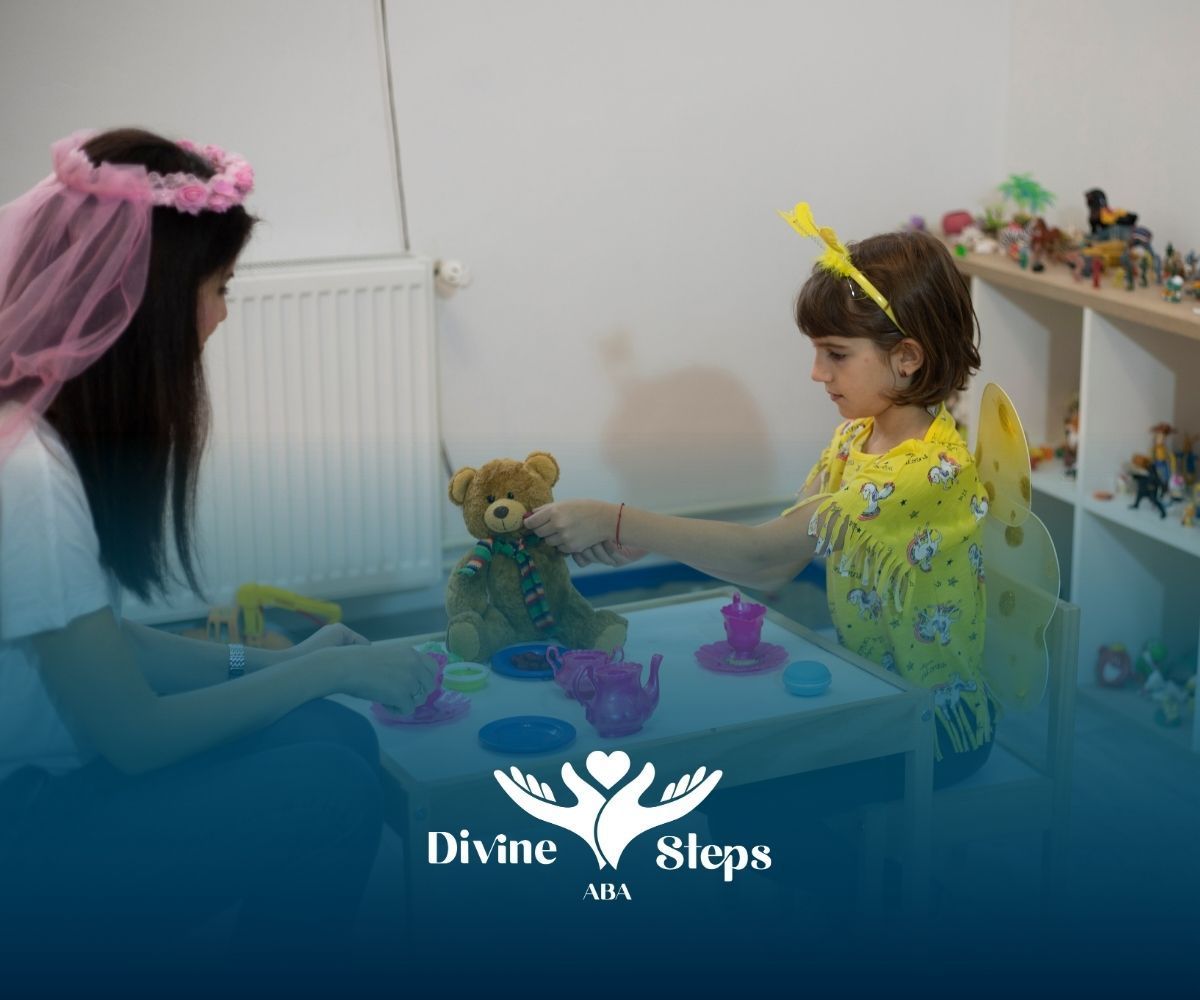Website by CWS
Comprehensive Guide to ABA Therapy for Teens
Key Highlights
- ABA therapy fosters independence and life skills.
- It emphasizes positive reinforcement to motivate growth.
- Programs are personalized for each teen’s developmental stage.
- Collaboration between families, schools, and therapists ensures consistency.
- ABA prepares teens for adulthood—academically, socially, and emotionally.
As someone who works in Applied Behavior Analysis (ABA), I’ve seen how this approach can truly transform the lives of teens on the autism spectrum. While early childhood interventions get much attention, adolescence is an equally critical period for growth and change.
During the teenage years, ABA shifts its focus toward promoting independence, teaching complex life skills, and preparing young people for the challenges of adulthood.
In this guide, I’ll walk you through what ABA therapy for teens looks like—its principles, benefits, structure, and real-world impact.
What Is ABA Therapy and How Does It Apply to Teenagers?
ABA therapy is a scientific, evidence-based method used to understand and change behavior in meaningful ways. For teens, it focuses on helping them navigate everyday life with greater independence and confidence.
Below, we’ll break down how ABA works and why it’s so effective for this age group.
Understanding the Core Concept
Applied Behavior Analysis revolves around studying how behavior is influenced by the environment and reinforcement.
By identifying what motivates a teen—whether it’s praise, privileges, or personal goals—we can strengthen positive behaviors while reducing those that interfere with success.
Shifting the Focus for Adolescence
For younger children, ABA often emphasizes foundational communication and play. But for teens, the focus expands to complex social understanding, emotional awareness, and practical life skills.
Sessions may include preparing for job interviews, managing time, or developing better peer relationships.
Meeting Teens Where They Are
What makes ABA unique is its flexibility. Every program is tailored to the teen’s current needs and goals.
Whether the goal is managing anxiety, improving social connections, or building independence, therapy is structured to make progress both measurable and meaningful.
Key Principles of Applied Behavior Analysis for Teen Development
Before exploring what happens in therapy sessions, it helps to understand the foundational principles of ABA. These are the strategies that shape how we teach, reinforce, and guide positive change.
Positive Reinforcement
Positive reinforcement is the backbone of ABA. It involves rewarding desired behaviors to encourage their repetition. For teens, this might mean verbal praise, extra screen time, or access to a favorite activity after demonstrating responsibility or self-control.
Skill Breakdown and Behavior Management
Complex behaviors are broken down into smaller, achievable steps. This helps prevent overwhelm and allows teens to build confidence as they master each component. Behavior management focuses not just on reducing challenges but on teaching alternative, adaptive skills.
Data-Driven Progress
ABA is grounded in data. Therapists track progress carefully, making continuous adjustments based on measurable outcomes. This ensures that each strategy remains effective and relevant to the teen’s growth over time.
Differences Between ABA for Teens Versus Younger Children
While the philosophy behind ABA remains consistent across all ages, the focus and approach evolve as children become teenagers.
Developmental Focus
ABA for young children centers on foundational skills like eye contact, imitation, and basic communication. For teens, the focus expands to independence—skills like budgeting, time management, and social confidence.
Motivation and Engagement
Teen sessions are more collaborative. They often include discussions about goals and choices, making therapy feel empowering rather than directive. Activities in ABA are tied to real-life interests such as music, technology, or future career plans.
Example Comparison
| Focus Area | ABA for Younger Children | ABA for Teens |
|---|---|---|
| Social Skills | Turn-taking, sharing | Advanced conversations, interpreting social cues |
| Life Skills | Dressing, potty training | Cooking, hygiene, scheduling, budgeting |
| Goals | Basic communication | Independence and preparation for adulthood |
Core Components of ABA Sessions for Adolescents
When working with teens, ABA sessions become more dynamic and life-centered. Every program is developed around individual goals and implemented in environments that feel relevant to real life.
Structured Yet Flexible Sessions
Sessions are guided by a personalized treatment plan developed by a Board Certified Behavior Analyst (BCBA). They may take place at a clinic, home, school, or community setting—wherever skills can best be practiced and reinforced.
Key Teaching Strategies
Some of the most common techniques include:
- Behavioral Skills Training (BST): Teaching, modeling, practicing, and providing feedback.
- One-on-One Sessions: Focused instruction on personal goals.
- Group Therapy: Peer-based practice for social skills.
- Natural Environment Teaching: Practicing skills in real-world settings.
Encouraging Generalization
Generalization—applying learned skills to new settings—is essential for lasting success. By practicing both in structured environments and natural situations, teens learn to adapt and apply their skills everywhere.
Benefits of ABA Therapy for Teens With Autism
ABA therapy has been proven to bring measurable improvements for teens on the autism spectrum, both in daily functioning and overall quality of life.
Social Skill Development
Social interactions can be tough for teens. ABA helps break down social nuances—like listening, empathy, and understanding feedback—into teachable steps. Programs such as UCLA PEERS have shown strong outcomes in helping teens build friendships and reduce social anxiety.
Building Everyday and Communication Skills
From hygiene routines to cooking, ABA helps teens build practical skills for daily independence. Communication training enhances both expressive and receptive language, reducing frustration and improving confidence.
Emotional Regulation and Confidence
Through consistent reinforcement and structured feedback, teens develop better emotional regulation skills. They learn coping strategies for anxiety, stress, and frustration—empowering them to handle challenges more effectively.
Common Goals Set in ABA Therapy for Teenagers
Every ABA plan starts with clearly defined goals that align with a teen’s personal needs and developmental stage. These goals promote growth, independence, and emotional balance.
Fostering Independence
One major focus is self-management—helping teens take ownership of daily routines like hygiene, organization, and chores. Tools such as visual schedules or digital reminders can support independence in meaningful ways.
Behavioral Modification and Emotional Growth
For teens, behavior modification focuses on understanding rather than compliance. Techniques such as role-playing, token economies, and self-monitoring help them navigate emotions and social expectations with maturity.
Preparing for Education and Employment
ABA can support academic and vocational readiness by improving focus, study habits, time management, and workplace behavior. Teens also gain experience with goal setting and teamwork—key ingredients for future success.
Customizing ABA Programs for Individual Teen Needs
One of ABA’s greatest strengths is its adaptability. Every teen has unique strengths, interests, and challenges—and therapy reflects that individuality.
Assessing Readiness and Starting Points
There’s no “wrong” age to start ABA. Even though early intervention is ideal, therapy can be highly effective during the teen years. A BCBA assessment helps determine readiness and identifies target areas for growth.
Tailoring Techniques for Mildly Affected Teens
For teens with mild autism or high-functioning profiles, therapy often focuses on advanced skills—like understanding sarcasm, managing social anxiety, and organizing tasks. These sessions build on existing strengths to enhance confidence and self-advocacy.
Collaboration With Families and Schools
Family and school involvement ensures skills are reinforced across all environments. Regular communication between parents, teachers, and therapists helps maintain consistency and supports long-term progress.
Conclusion
ABA therapy for teens is about empowerment—helping young people build independence, confidence, and life skills that will serve them far beyond the therapy room.
By combining positive reinforcement with data-driven, individualized strategies, ABA helps teens grow emotionally, socially, and academically. When families, schools, and professionals work together, the transformation can be remarkable.
If you’re looking for compassionate, high-quality ABA services, reach out to Divine Steps ABA. Our team provides comprehensive ABA therapy in Maryland, Virginia, and North Carolina, helping families access the support they need close to home.
In addition to traditional center-based programs, we also offer a range of services, including:
- In-home ABA therapy – bringing personalized support directly into your home environment.
- Autism evaluation – providing comprehensive assessments to guide individualized treatment planning.
Take the first step today—contact to Divine Steps ABA for a free consultation and discover how our team can help your teen reach their full potential.
Frequently Asked Questions
Where can I find ABA therapy services for teens in the U.S.?
Start by searching for providers who employ licensed and certified behavior analysts (BCBAs) experienced with adolescents. Resources such as Autism Speaks offer provider directories, and your insurance provider can also help identify in-network professionals.
Is ABA therapy effective for teenagers, including 13-year-olds with autism?
Yes, absolutely. Research shows that ABA remains highly effective for teens. Programs are adapted to emphasize independence, social connection, and communication—leading to real, measurable improvements in daily life.
What does a typical ABA therapy session look like for a teen?
Sessions are structured but engaging. They often include one-on-one instruction, role-play for social skills, or practical exercises like time management and cooking. The focus is always on helping the teen generalize these skills to real-world situations.
Sources:
- https://www.psychologytoday.com/us/therapy-types/applied-behavior-analysis
- https://www.autismspeaks.org/expert-opinion/aba-teens
- https://pmc.ncbi.nlm.nih.gov/articles/PMC9458805/
- https://pmc.ncbi.nlm.nih.gov/articles/PMC11487924/
- https://childmind.org/care/areas-of-expertise/autism-clinical-center/therapy-services/aba/




